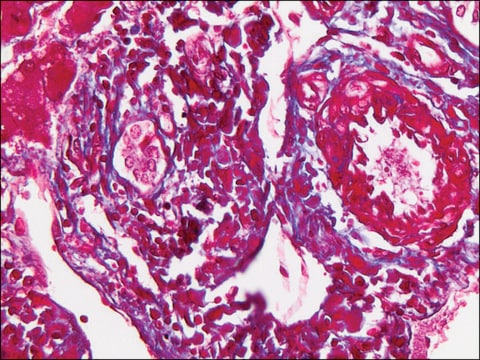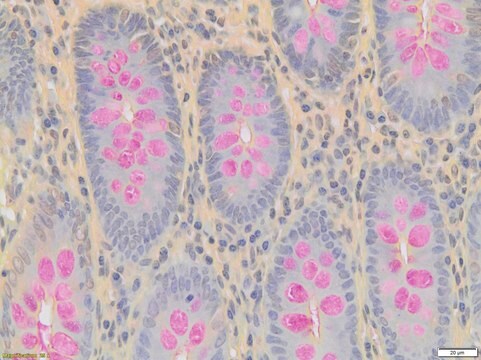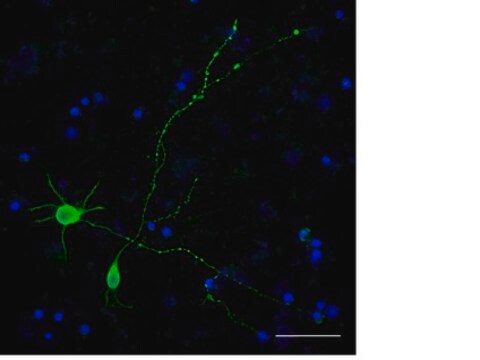MABN2709
Anti-LRAT Antibody, clone 49569

Synonim(y):
lecithin retinol acyl transferase, retinyl ester synthase
About This Item
Polecane produkty
pochodzenie biologiczne
mouse
Poziom jakości
forma przeciwciała
purified antibody
rodzaj przeciwciała
primary antibodies
klon
49569, monoclonal
masa cząsteczkowa
calculated mol wt 25.820 kDa
observed mol wt ~24 kDa
oczyszczone przez
using protein G
reaktywność gatunkowa
mouse
opakowanie
antibody small pack of 100
metody
immunofluorescence: suitable
immunohistochemistry: suitable
western blot: suitable
izotyp
IgG2aκ
sekwencja epitopowa
Cytoplasmic domain
numer dostępu Protein ID
numer dostępu UniProt
temp. przechowywania
2-8°C
informacje o genach
mouse ... Lrat(79235)
Specyficzność
Immunogen
Zastosowanie
Evaluated by Western Blotting in mouse retina lysate.
Western Blotting Analysis: A 1:1,000 dilution of this antibody detected LRAT in mouse retina tissue lysate.
Tested Applications
Western Blotting Analysis: A 1:1,000 dilution from a representative lot detected LRAT in Retinal pigment epithelium (RPE) microsome lysate.
Immunofluorescence Analysis: A representative lot detected LRAT in Immunofluorescence applications (Batten, M.L., et al. (2004). J. Biol. Chem. 279(11):10422-32; Moise, A.R., et al. (2007). J Biol Chem. 282(3):2081-90).
Immunohistochemistry Analysis: A representative lot detected LRAT in Immunohistochemistry applications (Batten, M.L., et al. (2004). J. Biol. Chem. 279(11):10422-32; Moise, A.R., et al. (2007). J Biol Chem. 282(3):2081-90).
Western Blotting Analysis: A representative lot detected LRAT in Western Blotting applications (Batten, M.L., et al. (2004). J Biol Chem. 279(11):10422-32; Moise, A.R., et al. (2007). J. Biol. Chem. 282(3):2081-90).
Note: Actual optimal working dilutions must be determined by end user as specimens, and experimental conditions may vary with the end user.
Opis wartości docelowych
Postać fizyczna
Rekonstytucja
Przechowywanie i stabilność
Inne uwagi
Oświadczenie o zrzeczeniu się odpowiedzialności
Nie możesz znaleźć właściwego produktu?
Wypróbuj nasz Narzędzie selektora produktów.
Certyfikaty analizy (CoA)
Poszukaj Certyfikaty analizy (CoA), wpisując numer partii/serii produktów. Numery serii i partii można znaleźć na etykiecie produktu po słowach „seria” lub „partia”.
Masz już ten produkt?
Dokumenty związane z niedawno zakupionymi produktami zostały zamieszczone w Bibliotece dokumentów.
Nasz zespół naukowców ma doświadczenie we wszystkich obszarach badań, w tym w naukach przyrodniczych, materiałoznawstwie, syntezie chemicznej, chromatografii, analityce i wielu innych dziedzinach.
Skontaktuj się z zespołem ds. pomocy technicznej




